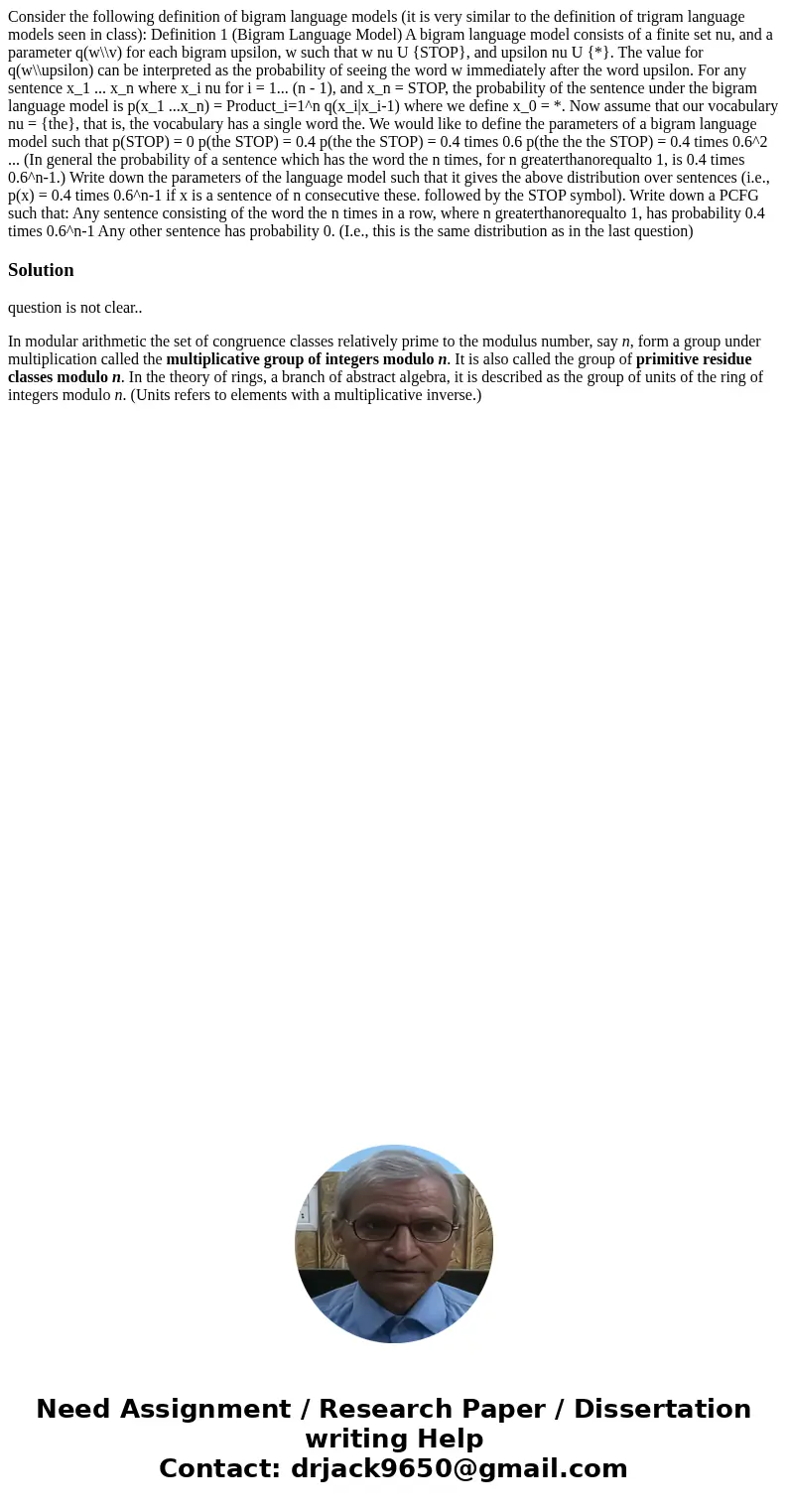Consider the following definition of bigram language models
Consider the following definition of bigram language models (it is very similar to the definition of trigram language models seen in class): Definition 1 (Bigram Language Model) A bigram language model consists of a finite set nu, and a parameter q(w\\v) for each bigram upsilon, w such that w nu U {STOP}, and upsilon nu U {*}. The value for q(w\\upsilon) can be interpreted as the probability of seeing the word w immediately after the word upsilon. For any sentence x_1 ... x_n where x_i nu for i = 1... (n - 1), and x_n = STOP, the probability of the sentence under the bigram language model is p(x_1 ...x_n) = Product_i=1^n q(x_i|x_i-1) where we define x_0 = *. Now assume that our vocabulary nu = {the}, that is, the vocabulary has a single word the. We would like to define the parameters of a bigram language model such that p(STOP) = 0 p(the STOP) = 0.4 p(the the STOP) = 0.4 times 0.6 p(the the the STOP) = 0.4 times 0.6^2 ... (In general the probability of a sentence which has the word the n times, for n greaterthanorequalto 1, is 0.4 times 0.6^n-1.) Write down the parameters of the language model such that it gives the above distribution over sentences (i.e., p(x) = 0.4 times 0.6^n-1 if x is a sentence of n consecutive these. followed by the STOP symbol). Write down a PCFG such that: Any sentence consisting of the word the n times in a row, where n greaterthanorequalto 1, has probability 0.4 times 0.6^n-1 Any other sentence has probability 0. (I.e., this is the same distribution as in the last question)
Solution
question is not clear..
In modular arithmetic the set of congruence classes relatively prime to the modulus number, say n, form a group under multiplication called the multiplicative group of integers modulo n. It is also called the group of primitive residue classes modulo n. In the theory of rings, a branch of abstract algebra, it is described as the group of units of the ring of integers modulo n. (Units refers to elements with a multiplicative inverse.)

 Homework Sourse
Homework Sourse